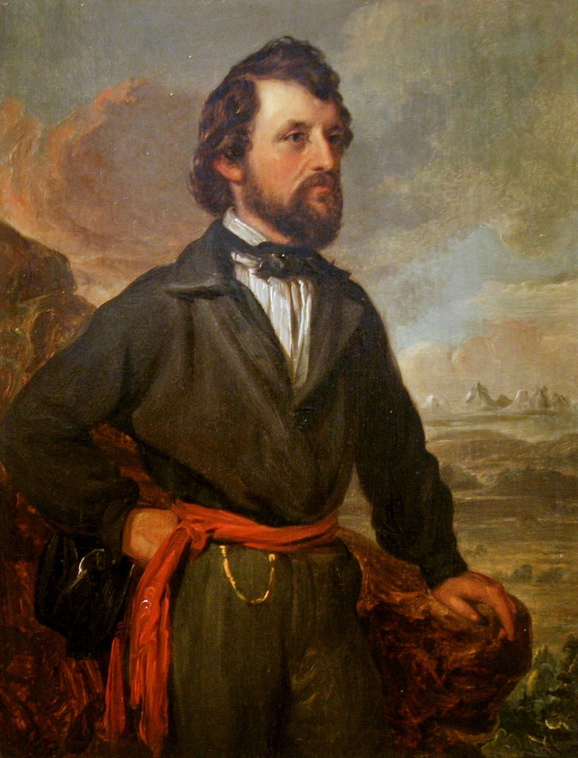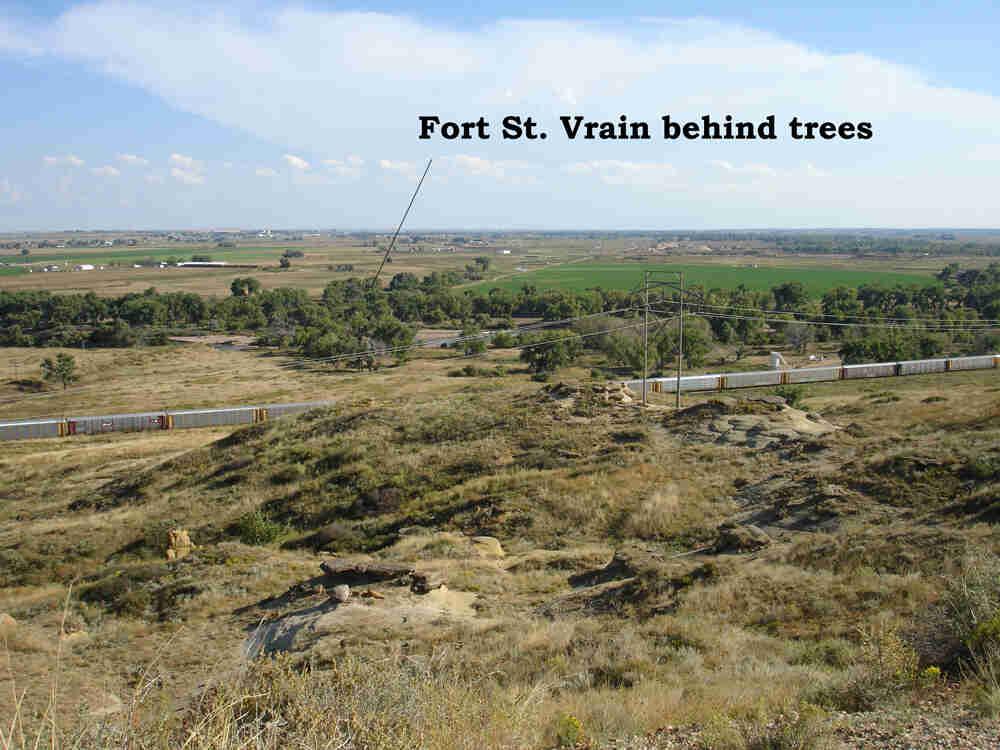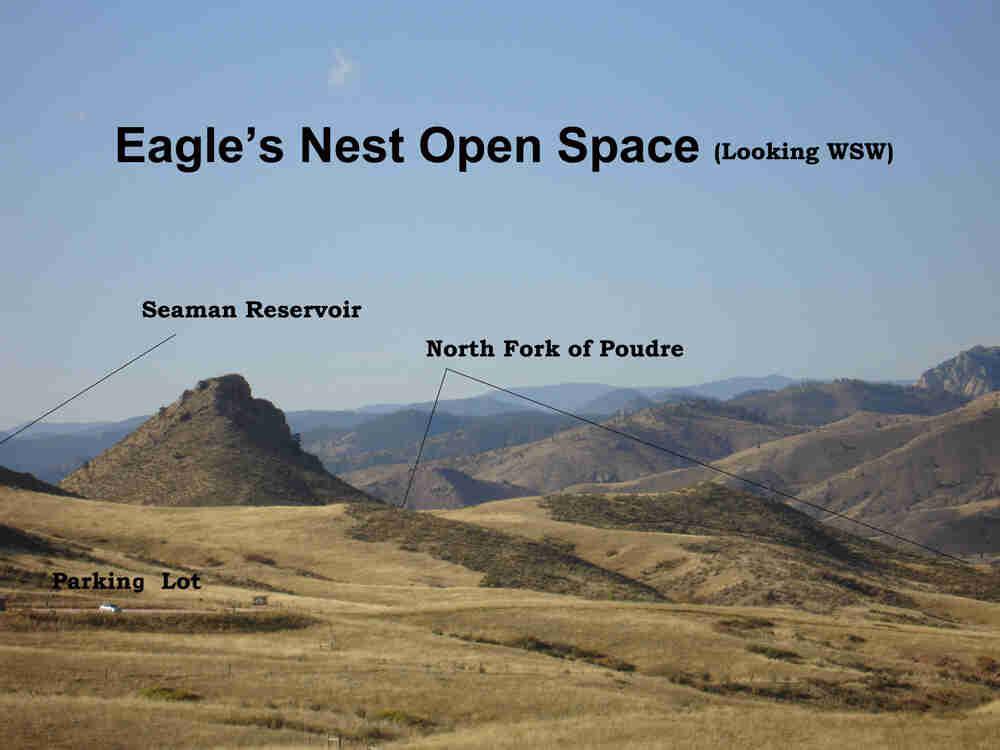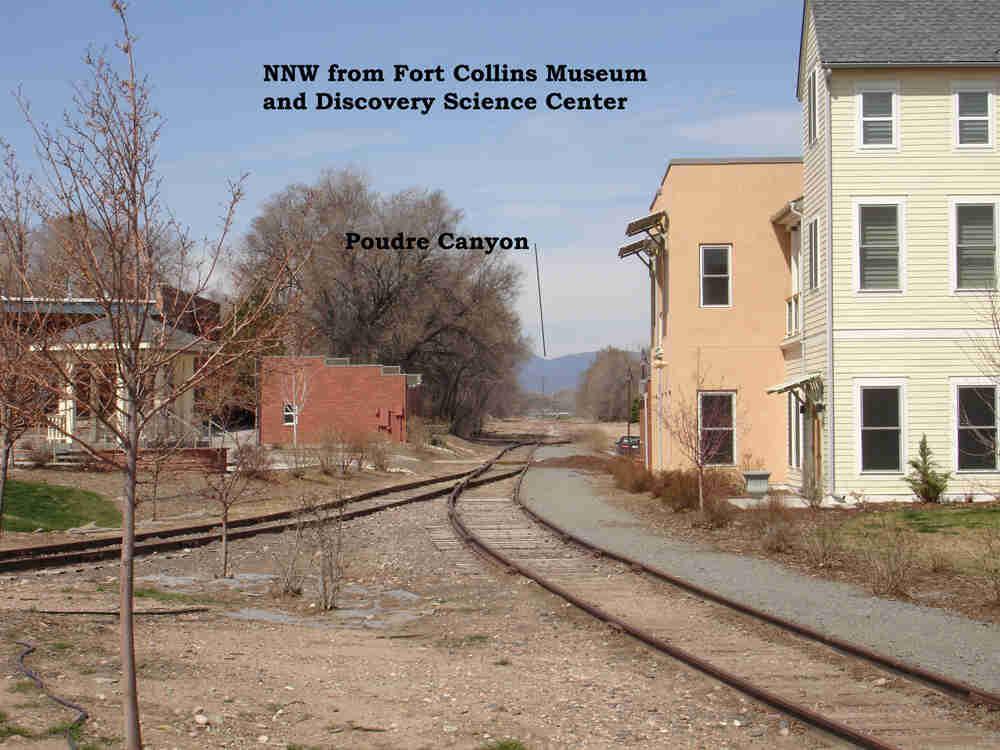John C. Frémont
Full Article
John Charles Frémont (1813–90) was an American explorer and cartographer for the US Topographical Engineers who crossed Colorado on various expeditions. Between 1842 and 1853, Frémont led five western expeditions with numerous objectives. He was also involved in the Mexican-American War (1846–48) in California, became one of California’s first senators, ran for president in 1856, served as commander of the army’s Department of the West during the Civil War, and became very wealthy through speculation in railroad development, only to lose his property and savings.
In Colorado, Frémont’s most prominent legacy remains his expeditions, which helped map the future Centennial State, informed the national discussion about railroads to the Pacific, and leant his name to such places as Fremont County and Fremont Street in Denver. In 1842 he led his first expedition to the west and began mapping the Oregon Territory. His second expedition in 1843 crossed present-day Larimer County and led to the creation of a large map of the Oregon Territory, created in 1845 by Frémont’s German cartographer Charles Preuss. Like the first, Frémont’s second expedition began at Westport Landing at the confluence of the Kansas and Missouri Rivers in present-day Kansas City. His objective was to continue exploring and mapping the Oregon Territory. His second objective brought him to northern Colorado in July and August.
Northern Colorado, 1843
A rumor persisted that there was a direct route to the west though the Rocky Mountains, a route that would greatly shorten the established course along the North Platte to the Sweetwater and South Pass in present-day Wyoming. This new route was said to be up the Cache la Poudre River northwest of Fort St. Vrain. Frémont was not able to attain any useful knowledge about this passage, but he knew about the Cache la Poudre River, having crossed it in 1842.
After acquiring new mules and supplies at Fort St. Vrain, Frémont split his company into two groups on July 25, 1843. He sent one north with Thomas Fitzpatrick to travel west along the 1842 route, while he took a group northwest to find the new passage through the Rockies. Along with Preuss and voyageurs—hired workers—he took a Shoshone woman and her two children, whose French father was shot in a Fourth of July brawl at Fort Lupton and died a week later.
On the afternoon of July 26, 1843, he left the fort and began his search for the route through the Rockies. He had trouble crossing the South Platte north of Fort St. Vrain due to heavy rains upstream. After a several-mile ride north, he decided to rest for the evening at the confluence of the Big Thompson River and the Little Thompson (not mentioned on maps). This is the present location of Milliken, Colorado. As described by Frémont in his journal, it was an evening shared with extremely irritating mosquitoes.
The next morning, the group traveled along the south side of the Big Thompson before crossing the river just south of the present-day Centerra shopping area near Loveland. Continuing north—just east of today’s Budweiser Events Center—he stopped at present-day Highland Meadows, north of Ptarmigan Golf Course, where he spotted the Poudre River. He proceeded to the northwest and traveled down what is today Riverside Avenue in Fort Collins, then along the route of what are now abandoned railroad tracks near the Fort Collins Museum of Discovery. They camped on the Poudre River just west of what is now Ted’s Place. In one day, Frémont and his contingent traveled twenty-six miles between the Thompson Creek campsite at Milliken and their campsite on the Poudre River.
The contingent ended up on the north fork of the Poudre, traveling through what is today Eagles Nest Open Space, Livermore, and then west and north of Phantom Canyon. A miserable day spent in the rain of what Frémont called the “Colorado Monsoon” led them through Turkey Creek Canyon north of today’s Halligan Reservoir and up onto Trail Creek, west of Cherokee Park Road.
Frémont and his guide Kit Carson knew that they had not located the rumored passage to the west. After camping near the present Colorado-Wyoming border (Boulder Ridge), Frémont quickly traveled into Wyoming, west to present-day Albany (Douglas Reservoir/ Creek), up French Creek and over Libby Flats through the Snowy Range, and finally across the Laramie River northwest of Saratoga in order to meet up with Fitzpatrick at Fort Hall.
Other Expeditions
Frémont would return to Colorado on expeditions in 1845, 1848, and 1853. In 1845, after locating the headwaters of the Arkansas River near present-day Leadville, he went off to California. In 1848 he returned to the Rockies, charged with finding a railroad route across the mountains. After a harrowing and deadly trek through the San Juan Mountains in December, Frémont led his party back to Taos, New Mexico, to recuperate and resupply before heading to California. On his final Colorado expedition in 1853, Frémont was again dispatched to search for a railroad route through the Rockies and document winter snowfall along the route. His party entered the San Luis Valley in December and crossed the Continental Divide at Cochetopa Pass before continuing on to Utah and San Francisco. After this fifth and final expedition, Frémont believed not only that a railroad route was possible but that it would be passable during the winter; however, the transcontinental railroad was eventually laid through South Pass in southern Wyoming, a far easier route.
10th Grade
John Charles Frémont (1813–90) was an American explorer and cartographer for the US Topographical Engineers. He crossed Colorado on various expeditions. Between 1842 and 1853, Frémont led five western expeditions. He was involved in the Mexican-American War (1846–48) in California. Fremont became one of California’s first senators. He ran for president in 1856. Fremont also served as commander of the army’s Department of the West during the Civil War. He became very wealthy through speculation in railroad development. However, Fremont lost his property and savings.
In Colorado, Frémont’s most prominent legacy remains his expeditions. The expeditions helped map the future Centennial State. They informed the national discussion about railroads to the Pacific. Fremont leant his name to such places as Fremont County and Fremont Street in Denver. In 1842, he led his first expedition to the west and began mapping the Oregon Territory. His second expedition in 1843 crossed present-day Larimer County and led to the creation of a large map of the Oregon Territory. Like the first, Frémont’s second expedition began at Westport Landing at the confluence of the Kansas and Missouri Rivers in present-day Kansas City. His objective was to continue exploring and mapping the Oregon Territory. His second objective brought him to northern Colorado in July and August.
Northern Colorado, 1843
A rumor persisted that there was a direct route to the west though the Rocky Mountains, a route that would greatly shorten the established course along the North Platte to the Sweetwater and South Pass in present-day Wyoming. This new route was said to be up the Cache la Poudre River northwest of Fort St. Vrain. Frémont was not able to attain any useful knowledge about this passage, but he knew about the Cache la Poudre River, having crossed it in 1842.
After acquiring new mules and supplies at Fort St. Vrain, Frémont split his company into two groups on July 25, 1843. He sent one north with Thomas Fitzpatrick to travel west along the 1842 route, while he took a group northwest to find the new passage through the Rockies. Along with Preuss and voyageurs—hired workers—he took a Shoshone woman and her two children, whose French father was shot in a Fourth of July brawl at Fort Lupton and died a week later.
On the afternoon of July 26, 1843, he left the fort and began his search for the route through the Rockies. He had trouble crossing the South Platte north of Fort St. Vrain due to heavy rains upstream. After a several-mile ride north, he decided to rest for the evening at the confluence of the Big Thompson River and the Little Thompson (not mentioned on maps). This is the present location of Milliken, Colorado. As described by Frémont in his journal, it was an evening shared with extremely irritating mosquitoes.
The next morning, the group traveled along the south side of the Big Thompson before crossing the river just south of the present-day Centerra shopping area near Loveland. Continuing north—just east of today’s Budweiser Events Center—he stopped at present-day Highland Meadows, north of Ptarmigan Golf Course, where he spotted the Poudre River. He proceeded to the northwest and traveled down what is today Riverside Avenue in Fort Collins, then along the route of what are now abandoned railroad tracks near the Fort Collins Museum of Discovery. They camped on the Poudre River just west of what is now Ted’s Place. In one day, Frémont and his contingent traveled twenty-six miles between the Thompson Creek campsite at Milliken and their campsite on the Poudre River.
The contingent ended up on the north fork of the Poudre, traveling through what is today Eagles Nest Open Space, Livermore, and then west and north of Phantom Canyon. A miserable day spent in the rain of what Frémont called the “Colorado Monsoon” led them through Turkey Creek Canyon north of today’s Halligan Reservoir and up onto Trail Creek, west of Cherokee Park Road.
Frémont and his guide Kit Carson knew that they had not located the rumored passage to the west. After camping near the present Colorado-Wyoming border (Boulder Ridge), Frémont quickly traveled into Wyoming, west to present-day Albany (Douglas Reservoir/ Creek), up French Creek and over Libby Flats through the Snowy Range, and finally across the Laramie River northwest of Saratoga in order to meet up with Fitzpatrick at Fort Hall.
Other Expeditions
Frémont would return to Colorado on expeditions in 1845, 1848, and 1853. In 1845, after locating the headwaters of the Arkansas River near present-day Leadville, he went off to California. In 1848 he returned to the Rockies, charged with finding a railroad route across the mountains. After a harrowing and deadly trek through the Sangre de Cristo Mountains in December, Frémont led his party back to Taos, New Mexico, to recuperate and resupply before heading to California. On his final Colorado expedition in 1853, Frémont was again dispatched to search for a railroad route through the Rockies and document winter snowfall along the route. His party entered the San Luis Valley in December and crossed the Continental Divide at Cochetopa Pass before continuing on to Utah and San Francisco. After this fifth and final expedition, Frémont believed not only that a railroad route was possible but that it would be passable during the winter; however, the transcontinental railroad was eventually laid through South Pass in southern Wyoming, a far easier route.
8th Grade
John Charles Frémont (1813–90) was an American explorer for the US Topographical Engineers. He crossed Colorado on various expeditions. Between 1842 and 1853, Frémont led five western expeditions. He was involved in the Mexican-American War (1846–48) in California. Fremont became one of California’s first senators. He ran for president in 1856. Fremont also served as commander of the army’s Department of the West during the Civil War. He became wealthy through speculation in railroad development. However, Fremont lost his property and savings.
In Colorado, Frémont’s legacy remains his expeditions. The expeditions helped map the state. They informed the national discussion about railroads to the Pacific. Fremont leant his name to such places as Fremont County and Fremont Street in Denver. In 1842, he led his first expedition to the west. Fremont began mapping the Oregon Territory. His second expedition in 1843 crossed present-day Larimer County. It led to the creation of a large map of the Oregon Territory. Frémont’s second expedition began at Westport Landing in present-day Kansas City. His goal was to continue exploring and mapping the Oregon Territory. His second objective brought him to northern Colorado.
Northern Colorado, 1843
There was a rumor that there was a direct route to the west though the Rocky Mountains. The route would shorten the established course along the North Platte to the Sweetwater and South Pass in present-day Wyoming. This new route was said to be up the Cache la Poudre River northwest of Fort St. Vrain. Frémont was not able to gain any useful knowledge about this passage. He knew about the Cache la Poudre River. He had crossed it in 1842.
After getting mules and supplies at Fort St. Vrain, Frémont split his company into two groups on July 25, 1843. He sent one north with Thomas Fitzpatrick to travel west along the 1842 route. Fremont took a group northwest to find the new passage through the Rockies. He took a Shoshone woman and her two children.
On the afternoon of July 26, 1843, he left the fort and began his search. He had trouble crossing the South Platte north of Fort St. Vrain due to heavy rains upstream. Fremont decided to rest for the evening at the confluence of the Big Thompson River and the Little Thompson. This is the present location of Milliken, Colorado. It was an evening shared with mosquitoes.
The next morning, the group traveled along the south side of the Big Thompson. Fremont crossed the river just south of the present-day Centerra shopping area near Loveland. Continuing north he stopped at present-day Highland Meadows. There he spotted the Poudre River. He proceeded to the northwest and traveled down what is today Riverside Avenue in Fort Collins. Fremont continued along the route of what are now abandoned railroad tracks near the Fort Collins Museum of Discovery. They camped on the Poudre River just west of what is now Ted’s Place. In one day, Frémont's group traveled twenty-six miles between the Thompson Creek campsite at Milliken and their campsite on the Poudre River.
The contingent ended up on the north fork of the Poudre. They traveled through what is today Eagles Nest Open Space, Livermore, and then west and north of Phantom Canyon. A miserable day spent in the rain of what Frémont called the “Colorado Monsoon” led them through Turkey Creek Canyon north of today’s Halligan Reservoir and up onto Trail Creek, west of Cherokee Park Road.
Frémont and his guide Kit Carson knew that they had not located the rumored passage to the west. After camping near the present Colorado-Wyoming border (Boulder Ridge), Frémont traveled into Wyoming. The group went west to present-day Albany (Douglas Reservoir/ Creek), up French Creek and over Libby Flats through the Snowy Range, and across the Laramie River northwest of Saratoga in order to meet up with Fitzpatrick at Fort Hall.
Other Expeditions
Frémont would return to Colorado on expeditions in 1845, 1848, and 1853. In 1845, after locating the headwaters of the Arkansas River near present-day Leadville, he went off to California. In 1848 he returned to the Rockies. Fremont was charged with finding a railroad route across the mountains. After a deadly trek through the Sangre de Cristo Mountains in December, Frémont led his party back to Taos, New Mexico, to recuperate and resupply before heading to California. On his final Colorado expedition in 1853, Frémont was again dispatched to search for a railroad route through the Rockies. His party entered the San Luis Valley in December and crossed the Continental Divide at Cochetopa Pass before continuing on to Utah and San Francisco. After this fifth and final expedition, Frémont believed not only that a railroad route was possible but that it would be passable during the winter. However, the transcontinental railroad was laid through South Pass in southern Wyoming.
4th Grade
John Charles Frémont (1813–90) was an American explorer for the US Topographical Engineers. He crossed Colorado on various expeditions. Between 1842 and 1853, Frémont led five western expeditions. He was involved in the Mexican-American War (1846–48) in California. Fremont became one of California’s first senators. He ran for president in 1856. Fremont also served as commander of the army’s Department of the West during the Civil War. He became wealthy through speculation in railroad development. However, Fremont lost his property and savings.
In Colorado, Frémont’s legacy remains his expeditions. The expeditions helped map the state. They informed the national discussion about railroads to the Pacific. Fremont leant his name to such places as Fremont County and Fremont Street in Denver. In 1842, he led his first expedition to the west. Fremont began mapping the Oregon Territory. His second expedition in 1843 crossed present-day Larimer County. It led to the creation of a large map of the Oregon Territory. Frémont’s second expedition began at Westport Landing in present-day Kansas City. His goal was to continue exploring and mapping the Oregon Territory. His second objective brought him to northern Colorado.
Northern Colorado, 1843
There was a rumor that there was a direct route to the west though the Rocky Mountains. The route would shorten the established course along the North Platte to the Sweetwater and South Pass in present-day Wyoming. This new route was said to be up the Cache la Poudre River northwest of Fort St. Vrain. Frémont was not able to gain any useful knowledge about this passage. He knew about the Cache la Poudre River. He had crossed it in 1842.
After getting mules and supplies at Fort St. Vrain, Frémont split his company into two groups on July 25, 1843. He sent one north with Thomas Fitzpatrick to travel west along the 1842 route. Fremont took a group northwest to find the new passage through the Rockies. He took a Shoshone woman and her two children.
On the afternoon of July 26, 1843, he left the fort and began his search. He had trouble crossing the South Platte north of Fort St. Vrain due to heavy rains upstream. Fremont decided to rest for the evening at the confluence of the Big Thompson River and the Little Thompson. This is the present location of Milliken, Colorado. It was an evening shared with mosquitoes.
The next morning, the group traveled along the south side of the Big Thompson. Fremont crossed the river just south of the present-day Centerra shopping area near Loveland. Continuing north he stopped at present-day Highland Meadows. There he spotted the Poudre River. He proceeded to the northwest and traveled down what is today Riverside Avenue in Fort Collins. Fremont continued along the route of what are now abandoned railroad tracks near the Fort Collins Museum of Discovery. They camped on the Poudre River just west of what is now Ted’s Place. In one day, Frémont's group traveled twenty-six miles between the Thompson Creek campsite at Milliken and their campsite on the Poudre River.
The group ended up on the north fork of the Poudre. They traveled through what is today Eagles Nest Open Space and then west and north of Phantom Canyon. The group went through Turkey Creek Canyon north of today’s Halligan Reservoir and up onto Trail Creek.
Frémont and his guide Kit Carson knew that they had not located the rumored passage to the west. After camping near the present Colorado-Wyoming border (Boulder Ridge), Frémont traveled into Wyoming. The group went west to present-day Albany (Douglas Reservoir/ Creek). Fremont proceeded up French Creek and over Libby Flats through the Snowy Range. The group continued across the Laramie River northwest of Saratoga in order to meet up with Fitzpatrick at Fort Hall.
Other Expeditions
Frémont would return to Colorado on expeditions in 1845, 1848, and 1853. In 1845, he located the headwaters of the Arkansas River near present-day Leadville. Afterwards, he went off to California. In 1848, he returned to the Rockies. Fremont was charged with finding a railroad route across the mountains. After a deadly trek through the Sangre de Cristo Mountains, Frémont led his party back to Taos, New Mexico. The group resupplied before heading to California. On his final Colorado expedition in 1853, Frémont was again sent to search for a railroad route through the Rockies. His party entered the San Luis Valley in December. They crossed the Continental Divide at Cochetopa Pass before moving on to Utah and San Francisco. After this fifth and final expedition, Frémont believed that a railroad route was possible and that it would be passable during the winter. However, the transcontinental railroad was laid through South Pass in southern Wyoming.


















